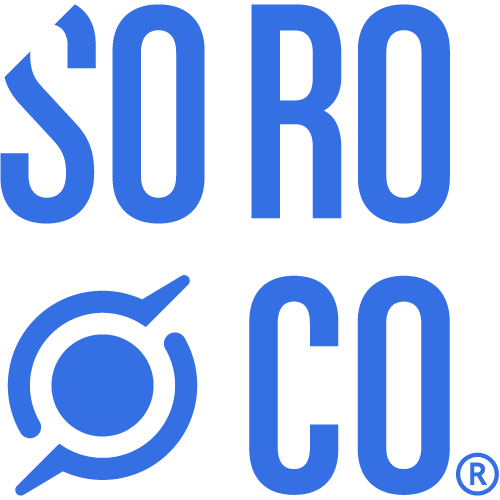|
|
|||||||||||||||||||||||||||||||||||||||||||||||||||||||||||||||
|
|||||||||||||||||||||||||||||||||||||||||||||||||||||||||||||||
|
|
|||||||||||||||||||||||||||||||||||||||||||||||||||||||||||||||
|
|||||||||||||||||||||||||||||||||||||||||||||||||||||||||||||||
The Great Resignation is a term that has been in use since early 2021 when large numbers of employees began voluntarily resigning from their jobs. A whopping 47 million people left their jobs in 2021, and as of February 2022, there were more than 11 million job openings in the U.S.
Employees have given many reasons for resigning from their jobs. The top ones include low pay, lack of advancement opportunities, feeling disrespected at work, trouble finding childcare, lack of flexibility in terms of work schedule, insufficient benefits, and working too many or too few hours.
So, if all of these reasons are the driving force behind people resigning from their jobs, what can employers do to make them stay? At a time when employee turnover is high and costly and retaining employees is difficult, employers can take advantage of automation to help keep employees from resigning.
In order to understand how automation can help with employee retention, you have to know what makes them want to stay on with a company. While pay is certainly an important factor, it is not the only one, nor even the most important. A recent global study found the following were the top drivers of a positive work experience that make employees want to stay with their employers:

There are many ways automation can be used to improve the employee experience, resulting in a happier and more engaged employee. Take a look:
Intelligent automation makes it possible for employees to access the processes and tasks they need to do their job no matter where they are. This means they can enjoy a hybrid work environment that allows them to work from home when needed and still be highly productive.
With so many people leaving their jobs and so many people being laid off, the people who remained have had to take on more and more of the work burden. This increases stress and decreases job satisfaction. Automating tasks and processes relieves that burden, so employees don’t have to put in extra hours and can find a better work/life balance without sacrificing productivity.
The automation of repetitive tasks and processes is a natural progression to achieving a good work/life balance. Having to perform repetitive tasks is time-consuming, tedious, and joyless. Employees have so much more to give you, so relieve them of the repetitive tasks so they can engage in higher-value tasks.
An intelligent automation platform that requires little to no code makes it possible for employees to create their own tools, such as a virtual assistant, when they need them. This will allow them to customize their tools to suit their unique needs, ultimately increasing their productivity.
When employees can connect and share work resources, such as notes and even bots, they can enrich each other’s work and create an environment that thrives on collaboration. Not only that, but cloud and automation technology together make it possible for employees to connect with each other, no matter where they are working.
With the automation boom that has arisen, companies are in need of people with the skills to work with automated systems. From developers to analysts to workflow specialists, your employees can broaden their skills and move within the company to fill these positions and their desire for advancement.
The COVID-19 pandemic has fuelled the growth of automation technology, and it is expected that our relationship with that technology will only deepen in the coming years. Robotic process automation (RPA) is at the forefront of this technology. It is offered as RPA-as-a-Service, being integrated into all existing digital technologies to reduce costs for companies, while increasing productivity and easing the workload for employees. This is a win-win, generating better results for the company while creating happier employees who want to stay.
Book a discovery call with a member of the Tangentia team today to find out more about how automation can help you retain your employees.
|
|
||||||||||||||||||||||||||||||||||||||||||||||||||||||||||||
|
||||||||||||||||||||||||||||||||||||||||||||||||||||||||||||
As the digital workplace continues to rapidly expand, it shouldn’t come as a surprise that robotic process automation (RPA) solutions are following suit.
In fact, the RPA market was worth an estimated US$2.65 billion at the close of 2021, with a projected CAGR of 27.7% from now until 2030.
In other words, the RPA market is on track to hit US$23.9 billion by 2030, signifying a massive shift in the way humans and AI interact in the workplace.
Add this to the fact that up to 25% of employees spend time and resources on unnecessary manual tasks that are now fully automated, and it’s easy to see that RPA — and intelligent automation — provide robust benefits to businesses willing to implement digital strategies and AI solutions for the future.
Read on to learn the basics of RPA and some of the biggest benefits it has to offer.
In its most basic form, RPA refers to software designed to automate various rules-based business operations and repetitive manual tasks. It aims to boost efficiency, productivity, and accuracy across the business.
Whether your business leverages simple RPA or more intelligent automation like AI, IDP, or Digital Workers, there’s no denying what a business can accomplish with a unified digital and human workforce.
Today, RPA is becoming an integral component of the modern business landscape. The world’s leading brands use RPA processes to unlock future expansion in an era defined by an emerging digital workforce, AI, and cloud-based solutions.
Automation technologies offer significant benefits to virtually every industry, especially in departments with repetitive, manual tasks.
So, what are the biggest benefits RPA has to offer to businesses today?

Below we will outline ten benefits of robotic process automation and explain how companies around the globe use RPA software to upgrade business processes, enhance analytics, meet compliance, and manage human resources.
One of the most significant benefits of RPA is that it cuts down on time spent on manual processes meaning employees have more time to focus on creative tasks that add direct value to the company.
A Deloitte survey showed that 56% of its respondents have already implemented RPA technology, with expectations of a global takeover in as little as five years.
Bots are always working, and with much more accuracy, speed, and scale than humans can. As a result, tasks are completed far quicker and with fewer mistakes.
Using bots to automate tedious rule-based activities like data collection, reporting, and onboarding allows your business to streamline development and focus on enhancing the end-user experience.
RPA creates a way for businesses to merge digital workers with the human workforce. When unifying humans and AI, scalability is no longer an issue because automation provides seamless solutions to help you expand your business with fewer human resources.
This allows your human workers to focus on more strategic and creative tasks while leaving the more tedious and mundane processes to automated bots.
Implementing RPA processes improves productivity and efficiency by automating manual tasks for every aspect of your business.
According to Deloitte’s third annual RPA survey, “RPA continues to meet and exceed expectations across multiple dimensions including improved compliance (92%), improved quality/accuracy (90%), improved productivity (86%), cost reduction (59%).”
With more sophisticated automation solutions leveraging machine learning and AI, you can expect this trend to continue.
Businesses employing RPA technologies reported 10 to 40 percent measurable cost reductions during initial deployments.
There are also reports of companies achieving ROIs of up to 200% during the first twelve months, with bots accounting for a mean of 20% FTE capacity.
Automating manual tasks ensures your employees can stay focused on revenue-generating activities and providing the best customer experience possible.
RPA bots reduce the risk of manual errors associated with data management, authorization, and even help identify cyber-attacks that humans may overlook.
A reduction in data entry has far-reaching advantages, especially for financial services involving audits, taxes, and private customer data.
When automation is configured correctly, there is less risk associated with data being entered incorrectly throughout the data entry process.
Since RPA eliminates the risk of error, your overall data quality is better, too.
High-quality data translates to streamlined processes. It also provides you with detailed performance analytics that you can use to measure the effectiveness of any automation solution, create data benchmarks for various departments, and helps you identify new areas and processes that may be ideal candidates for automation.
It’s safe to say humans tend to be happier at their jobs when it includes tasks that allow them to learn new things and engage with activities outside of data collection.
By handing the monotonous jobs over to automated bots, your workforce is likely to see decreased turnover rates.
RPA offers a lot of value when it comes to streamlining compliance and combating fraud.Automating the processes that involve managing sensitive customer data reduces the risk of a human mishandling that critical data since automation handles the various processes related to collecting, extracting, and processing PII.
Whether you’re automating financial processes, data extraction, or something else, there’s no denying the immense benefits RPA and intelligent automation have to offer to businesses in all industries.
Are you looking to kickstart your robotic process automation journey? See how our TiA Tangentia digital workers can transform your internal processes. Book a demo today to get started.
Hyper intelligent automation, which is often referred to simply as hyper automation, is a general term that refers to the application of advanced and emerging technologies to automation.
Hyper Automation is rapidly transforming what’s possible with Robotic Process Automation (RPA). RPA was originally designed to repeatedly perform the same task accurately and it created the foundation for automation as we know it. It required incredibly complex code and it was not capable of adapting to new information.
However, advanced technologies like artificial intelligence and machine learning are now being applied to RPA, creating a more evolved version of RPA that actually can grow and adapt on its own. The application of advanced technologies to RPA and similar systems is the general idea behind hyper automation. A secondary goal of hyper automation is creating a unified understanding of all automated tasks and processes throughout the organization.
None of this is theoretical – hyper automation is currently transforming businesses around the world. Approximately 34% of organizations are adopting hyper automation with a focus on employee productivity. Enough organizations are aware of the benefits of hyper automation to make it an entirely new movement focused on evolving existing automated processes and understanding every automated process in the business.
Today we’re going to examine how hyper intelligent automation is already evolving RPA, along with a deeper dive into what hyper automation actually means.
Hyper automation is not a specific technology or tool, but rather an umbrella term that refers to a wide range of tools and technologies that are used in advanced automation. Additionally, the term can also be used to refer to more sophisticated automation processes that go beyond the current definition of automation.
Every new and emerging technology that aims to make computers smarter plays a part in hyper automation. Each of the following technologies can be used to evolve RPA into something vastly more powerful:
Engineers and developers will use any of the above technologies (plus any that are not mentioned) to create advanced versions of the existing RPA processes.
RPA was revolutionary for organizations across all industries and still is. However, it was originally designed for mundane, repetitive tasks such as data entry or reconciling invoices.
There are three problems with RPA that hyper automation aims to solve:
Hyper intelligent automation aims to address each of these problems. By applying advanced technologies, typically AI and ML, RPA systems can become evolved versions of themselves that are aware of resource consumption and can react to unforeseen challenges in their tasks.

A real-world example of hyper automation evolving an RPA process comes from a developer from the United States government. The developer applied AI to the existing RPA that was used to help determine eligibility for the Affordable Care Act applications. The evolved RPA allowed the agency to scale without needing more human employees and serve more users.
Essentially, hyper automation creates better RPA bots that truly unlock the scalability that has been the goal of the technology since the beginning.
There are numerous capabilities that come with an IDP solution. These include:
So far we’ve been focusing on how specific RPA tasks and bots can grow and evolve with hyper automation. However, hyper automation not only applies advanced technology to the given process but also creates cross-functional collaboration across different processes and robots.
Ultimately, the goal of hyper automation is not to have dozens of siloed processes that are more advanced but to have an entire company-wide system of automated processes that work together to accomplish required tasks in the most intelligent way possible. Evolved RPA systems will be able to decide the best way to accomplish the task when armed with data from the entire company.
Organizations across all industries are undergoing digital transformations in an effort to remain competitive. Hyper automation is yet another way for companies to embrace a true digital transformation by creating an over-arching system of automated processes that create a holistic view of the entire organization. Additionally, each individual process will be approached intelligently, rather than strictly programmatically as with early RPA bots.
However, it’s worth mentioning that the promises of hyper automation discussed above will only be reaped by organizations with the right team of developers and engineers to apply advanced technologies to RPA bots.
Are you looking to evolve your RPA bots with advanced capabilities along with creating an all-encompassing vantage point of all automated processes in your business, but unsure where to start? Contact Tangentia today to see how we can help evolve your RPA bots into hyper-intelligent automated digital workers that will help your company reach new heights.
Intelligent Document Processing (IDP) is a method of automating the collection of structured, semi-structured, and unstructured data from a variety of sources and organizing it into a usable format. IDP is the most advanced form of extracting data from documents.
Keep in mind that IDP is not the same as Optical Character Recognition (OCR), despite the fact that the two terms are often used interchangeably. Instead, IDP was developed to enhance the capabilities of OCR, as well as to incorporate other technologies, such as data capture and Natural Language Processing (NLP).
With this in mind, this blog post covers how IDP works. But before we get into that, let’s talk about the benefits of IDP.
With the ability to eliminate the need to collect unstructured and semi-structured data manually, IDP delivers a number of critical benefits for a wide range of organizations. These include:
These benefits are significant, particularly in a world where organizations increasingly have to do more with less. With this in mind, let’s take a look at the IDP workflow and how it helps organizations reap these benefits.
The IDP workflow is used to scan hard-copy documents and files, capture the information in them, and store that information in a digital format. Types of documents that can be scanned include PDF files, emails, text messages, medical imaging, forms, and other types of documents in digital and paper-based formats. With this in mind, the IDP workflow consists of five steps, which are as follows:
1. Preprocessing of the document
Documents must be preprocessed to ensure that OCR can effectively distinguish the characters and words from the background. For this reason, the following techniques are used to prepare the document for OR:
2. Classification of the document
Classification of the document is a three-part process that determines the following:
3. Extraction of data
There are two ways to extract data from a document. These include:
4. Validation of data
The validation of extracted data is done to determine whether it contains any inaccuracies. This is done by applying data validation rules to the document, ensuring that any inaccuracies that are present are detected and flagged so they can be corrected.
5. Review by a human
The IDP workflow would not be complete without the human component. All flagged documents are reviewed by a human to confirm and correct inaccuracies. This is particularly useful during the supervised learning of learning-based extraction.
Once the IDP workflow has been completed, the resulting data can then be entered into a database or exported to any one of a number of file formats, such as PDF or XML.

There are numerous capabilities that come with an IDP solution. These include:
The above capabilities are applicable to a wide range of industries. The following are specific use cases for IDP:
The key to taking full advantage of IDP is to take a strategic approach to implementation. This includes implementing process intelligence, which is used to examine your processes and determine where IDP implementation will be most effective, as well as identifying process inefficiencies that could interfere with the implementation of IDP.
At Tangentia, we have an experienced team who can work with you to determine your IDP needs and develop a solution that will enhance your document processing capabilities.
For more information, reach out to a Tangentia ream member today.
|
|
||||||||||||||||||||||||||||||||||||||||||||||||||||||||||||||||||||
|
||||||||||||||||||||||||||||||||||||||||||||||||||||||||||||||||||||
Tangentia is proud to announce the expansion of our North American sales and leadership team. We understand the value people bring to our organization and it has been our goal since expanding into the USA. to create job opportunities for professionals throughout North America who want to be part of the quickly evolving artificial intelligence and automation industry.

We are excited to announce that Robert Lye is joining our leadership team as Vice President & Chief Evangelist – Automation. Robert will bring thought leadership and transformational thinking to Tangentia customers to aid in building and growing successful intelligent automation programs and accelerating value realization.
Seasoned by hands-on real-world experience, Robert offers great insights into the opportunities and challenges of digital transformation and will be an integral part of ensuring our customers have the tools and support they need to navigate the fast-paced world of automation.
“I am honored and humbled to be joining the Tangentia Family and to work alongside a remarkably talented team,” Robert says. “I am extremely excited for the journey ahead and look forward to enhancing the success of Tangentia customers.”
Also new to the Tangentia team is Joseph Saad, who joins us as our new Sales Account Executive based in Montreal, Canada. He speaks English, French, and Arabic and comes with a very experienced background in sales. Joseph has already embarked on his journey at Tangentia, and we look forward to building a robust Montreal-based team in the near future.

We are also pleased to welcome two new members of our executive sales team in the USA. Shawn Bakos is our new Sales Account Executive based in Delaware, USA. He comes with many years of experience in the IT field besides being in the US Navy. An avid sports person who played competitive ice hockey, we are pleased to have Shawn Bakos flying the Tangentia flag on the US East Coast.
Mike Fox is our new Sales Account Executive based in San Diego, California. Mike is an expert in sales farming, hunting, and fostering profitable win-win deals, and he has a passion for building long-lasting customer relationships. We are excited to have Mike on board and besides bringing on board the warm California sun, we are confident his experience will stand us in good stead on the US West Coast.
Vijay Thomas, Founder and CEO at Tangentia said “It is fantastic to have Robert Lye, take the plunge from being a customer of Tangentia to joining our senior leadership team. It is a ratification of the Tangentia strategy of growth and value creation for our customers.”
George Bennett, VP Sales at Tangentia mentions “ Alongside Bob, we are really excited to have Joseph in Montreal, Mike in San Diego and Shawn in Delaware join our team. It's full steam ahead from now on.”
Tangentia is passionate about bringing the best people onboard, so we can provide top-tier value to our customers through collaboration and innovation. We have been certified as a Great Place to Work for 2022 and we have been certified by the Canadian Aboriginal and Minority Supplier Council as an aboriginal and minority business enterprise.
As one of INC 5000’s Fastest Growing American Companies in 2018 and one of Growth 500’s fastest-growing companies in Canada 6 years in a row, we are always looking for top talent. Visit our Careers page to find out more about how you can become part of the Tangentia team.
Tangentia, a global leader in digital transformation solutions, announced today that they have strengthened their partner network with the addition of Soroco, a leading provider of process discovery, task mining, and process transformation solutions that are based on an AI-powered #work-graph approach.

This new partnership will allow Tangentia to provide their clients with Soroco's work graph platform – Scout, enabling them to discover end-user interactions to discover, monitor, and improve processes in real-time.
“We are thrilled to join forces with Soroco,” says George Bennett, VP of Business Development for Tangentia. “This partnership will allow us to leverage Soroco Scout, their work-graph platform that will help our clients accelerate their digital transformation programs through a discovery-led process that is world-class”
With head offices in Boston, London and Bangalore, Soroco has a global presence that allows them to provide task mining, process discovery and intelligent process transformation solutions to clients no matter where they are located.
“Streamlining processes helps companies harness the power of automation,” says Vijay Thomas, CEO of Tangentia. “Our partnership with Soroco will make it even easier for us to empower our clients to fill in technology gaps, lower costs and increase productivity by helping them turn unstructured task and process data into insights they can use to improve processes companywide.”
Samson David, CEO of Soroco said, “We are happy to partner with Tangentia who are a leading boutique consulting, technology, and outsourcing firm with global presence. Our partnership would help bridge the most challenging technology gaps for their customers in e-commerce, supply chains, and various industries and help them accelerate their automation and digital transformation programs by discovering their work graph.”
Tangentia and Soroco share the same strategy of building a partner network that will allow them to bring the world’s leading automation software and service providers together to ensure their clients have access to cutting-edge solutions
Tangentia’s think global, act local approach to their solutions, combine with nearly 20 years of experience in digital technology, allows them to help clients across numerous industries simplify their relationship with technology and accelerate their adoption of automation. Click here to learn more about Tangentia Automation.
Since 2003, Tangentia has been at the leading edge of the technological revolution, helping clients simplify their relationship with technology. Based in Toronto, Canada, they also have offices in New York and Goa, making it possible to reach clients across the globe and across industries.
Soroco is on a mission to discover how the world works to help teams be their best. To do this, we are evangelizing and commercializing the “work graph”, which is a structured view of how teams get work done across people, process, technology, and documents. The “work graph” unifies disjoint categories like Process Mining, Task Mining, user training, BPM and RPA to provide a single source of truth. Teams can use the work graph to identify and resolve sources of friction at work, such as technology impediments, poor process design, opportunities for learning and collaboration, among others. Soroco’s work graph platform, Scout, enables a culture of continuous improvement and identifies benefits from applying a portfolio of change levers, delivering targeted change programs at scale. Soroco has offices in Boston, London, and Bangalore with a roster of Fortune 500 customers across 30 countries. Our team has published 150+ papers and patents. Visit www.soroco.com to learn how we help teams discover their work graph.